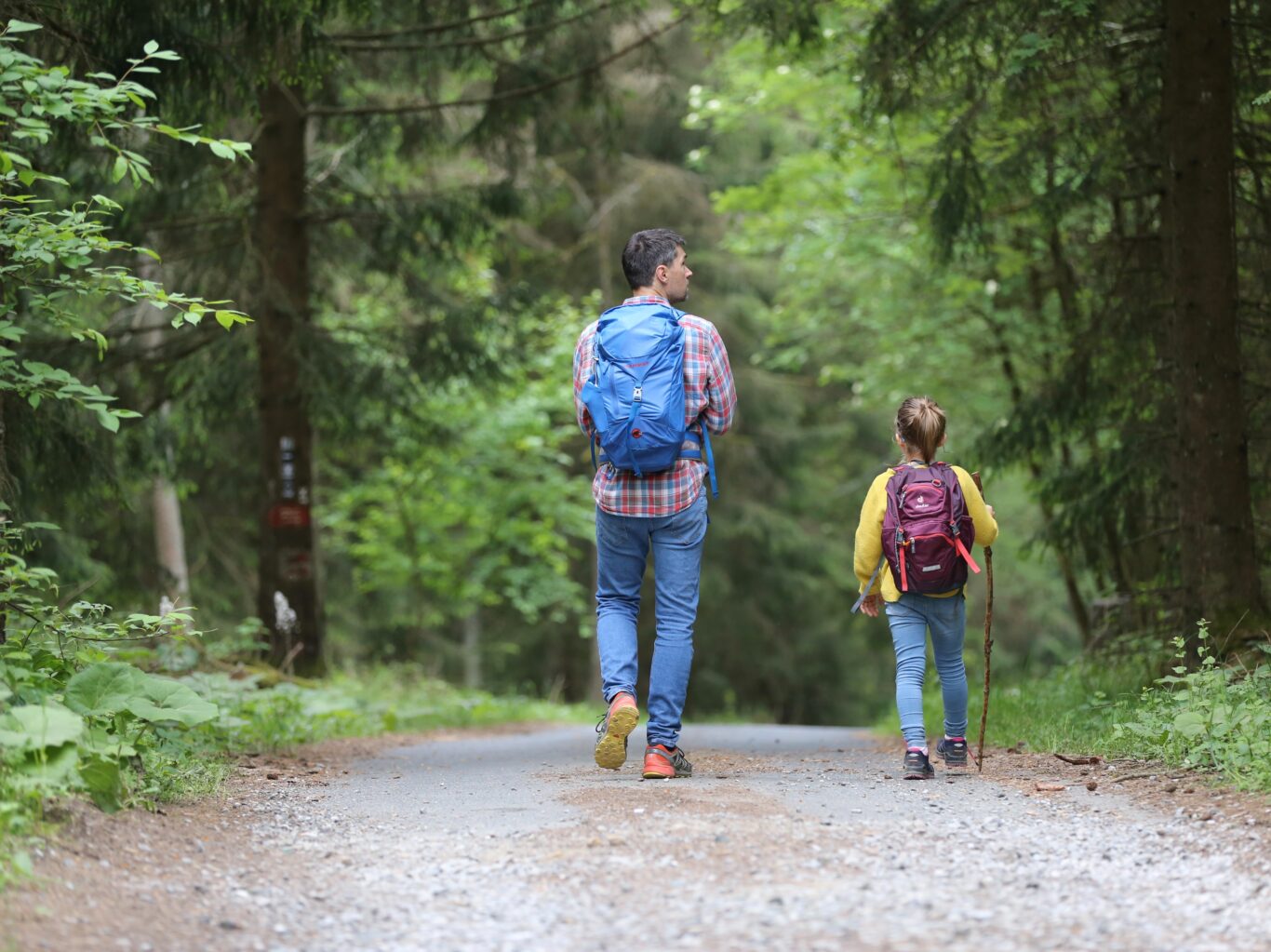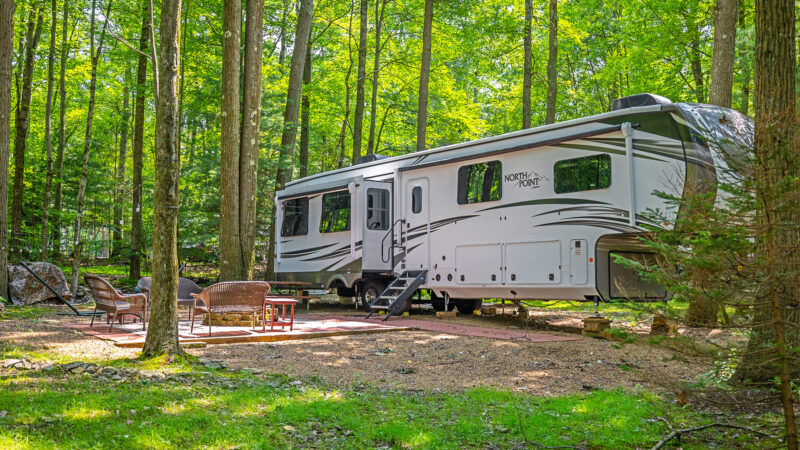
Introduction to Summer Camping in Allegheny National Forest
Embarking on a summer camping adventure in the Allegheny National Forest offers an opportunity to immerse oneself in one of Pennsylvania’s most stunning natural landscapes. This sprawling expanse encompasses over 500,000 acres of lush forests, serene waterways, and diverse wildlife. As the only national forest in Pennsylvania, it provides the perfect backdrop for a wide range of outdoor activities – from hiking and fishing to swimming and invaluable star gazing on clear summer nights.
Summer months lure campers eager to experience the mild climate and embrace the forest’s enchanting beauty. The forest’s elevations vary, ensuring that even on warmer days, a gentle breeze is often present among the trees, providing a refreshing respite from the summer heat. The dense canopy of hardwoods, conifers, and the occasional splash of wildflowers create a tapestry of green that comes to life beneath the summer sun.
The forest offers a variety of camping experiences, from the ease of RV camping with full hookups to the back-to-basics allure of tent camping in more remote areas. Designated campgrounds provide convenient amenities, while off-the-beaten-path options grant solitude and a sense of wilderness.
Regardless of your camping style, understanding the forest’s topography, weather patterns, and regulations is essential. Respect for the natural environment and adherence to Leave No Trace principles ensures that the Allegheny National Forest remains a cherished destination for all who visit.
Packing Essentials: What to Bring for a Comfortable Camp
When preparing for a summer camping trip to Allegheny National Forest, it’s crucial to consider both the basics for survival and the items that enhance comfort. Beyond the essential camping gear, such as a tent, sleeping bag, and suitable clothing, campers should not overlook the following items:
- Sleeping Pad or Air Mattress: To ensure a good night’s sleep on the forest floor, never underestimate the value of padding. A quality sleeping pad or air mattress can be critical for comfort and warmth.
- Portable Cooking Gear: A portable stove, along with pots and utensils, will make meal prep easier. Do not forget to bring all necessary cooking essentials like fuel, a lighter, and a cooler for food storage.
- Adequate Water Storage: Hydration is key, so bring plenty of water, and consider a water purification method, such as tablets or a filter, in case you need to source water from the forest.
- Navigation Tools: Even though many people rely on mobile devices, it’s wise to carry a map and compass as backup. Areas within Allegheny National Forest might have limited reception.
- First-Aid Kit: Pack a comprehensive first-aid kit tailored to the length of your trip and the size of your group. Include items for treating cuts, blisters, insect bites, and potential allergic reactions.
- Insect Repellent and Sunscreen: Protect yourself from sunburn and insect-borne diseases with ample sunscreen and bug repellent. Consider clothing treated with permethrin for additional protection.
- Lighting: Flashlights or headlamps are essential for night-time navigation and campsite illumination. Pack extra batteries or a solar charger to keep them powered.
- Multipurpose Tool: A knife or a multitool can come in handy for various tasks around the campsite, from preparing food to making gear repairs.
- Trash Bags: Practice Leave No Trace principles by packing out all of your garbage. Sturdy trash bags are essential for keeping your campsite and the surrounding environment clean.
Accommodating these items will not only make your camping experience more enjoyable but also more secure. Be sure to adjust your packing list based on the specifics of your trip, the season, and personal needs.
Weather Preparedness: Staying Comfortable and Dry
Camping in Allegheny National Forest during the summer can bring unexpected weather changes. Being prepared for these eventualities ensures that your outdoor experience remains enjoyable regardless of the conditions. Here are some tips for staying comfortable and dry:
- Check Weather Forecasts: Before heading out, consistently monitor local weather updates for the Allegheny National Forest. This information is crucial in preparing for sudden shifts in weather patterns.
- Waterproof Gear: Invest in quality waterproof gear, including tents, tarps, and backpack covers. Waterproof tents with a reliable rainfly protect against rainfall, while tarps can provide additional shelter for cooking and socializing.
- Appropriate Clothing: Layering clothing allows for easy adjustment to changing temperatures. Breathable, moisture-wicking fabrics keep you dry and comfortable. Ensure you have waterproof jackets and ponchos to combat unexpected downpours.
- Secure Campsite Selection: Choose high ground for setting up camp to avoid pooling water during heavy rains. Additionally, distance your tent from water bodies which may rise unexpectedly.
- Footwear: Waterproof hiking boots are essential for traversing wet trails while providing protection and support. Pack extra socks to ensure your feet stay dry.
- Dry Bags: Utilize dry bags or sealable plastic bags to keep your essentials and electronics safe from moisture. This is particularly important for maps, matches, and personal items.
- Campfire Readiness: Have materials ready to start a fire in damp conditions. This includes waterproof matches, lighters, and quick-lighting fire starters to warm up and dry clothing if necessary.
By incorporating these strategies, campers can comfortably embrace the natural splendor of Allegheny National Forest, irrespective of unanticipated summer showers or cooler weather fronts.
Navigating the Trails: Hiking Tips for the Adventurous Camper
Within the verdant expanses of Allegheny National Forest, the trails call to adventurous campers with the promise of natural wonders and challenging treks. To ensure a safe and enjoyable experience, adventurers are wise to heed the following hiking tips:
- Research Trail Options: Prior to arriving, campers should examine the variety of trails offered in Allegheny National Forest. From the gentle wanderings of the Hearts Content Interpretive Trail to the rigorous paths of the Hickory Creek Wilderness, there is terrain to suit every level of hiker. Utilize online resources, maps, and guides to select an appropriate trail for your skill level.
- Prepare Properly: Embark with the necessary supplies and equipment. A sturdy pair of hiking boots, breathable clothing, and a lightweight backpack are essential. It is also wise to include a map, compass or GPS device, sufficient water, snacks high in energy such as nuts and granola bars, a first aid kit, and insect repellent.
- Stay Safe: Always inform someone of your hiking plans and estimated return time. Avoid hiking alone and try to maintain a steady pace suitable to the least experienced member of your group. Weather in the forest can change rapidly; thus, it is paramount to check forecasts and prepare for all conditions.
- Respect Nature: The Allegheny National Forest is a protected ecosystem. Campers must practice ‘Leave No Trace’ principles, preserving the environment for future generations. This means carrying out all litter, respecting wildlife by maintaining a safe distance, and avoiding the picking of plants or disturbing natural features.
By following these guidelines, hikers in Allegheny National Forest can enjoy the natural beauty around them while minimizing risk and impact, creating a memorable and sustainable outdoor adventure.
Fishing and Water Recreation: Making the Most of the Forest’s Lakes and Rivers
Allegheny National Forest offers a plethora of opportunities for anglers and water recreation enthusiasts. The forest’s sparkling lakes, including the popular Allegheny Reservoir, are teeming with fish like bass, trout, and walleye, making it a prime destination for fishing. To maximize the experience:
- Obtain proper licensing: Before casting a line, ensure that all members of your party have the required Pennsylvania fishing licenses. These can be purchased online or at local tackle shops.
- Research the best spots: Not all areas of the forest’s lakes and rivers are equal for fishing. Spend time consulting with local bait shops, experienced anglers, or forest rangers to find the prime fishing spots.
- Respect the regulations: Each body of water may have different rules regarding catch limits, size restrictions, and permitted fishing methods. Adhering to these guidelines is vital for conservation efforts and to maintain the balance of the forest’s ecosystem.
- Safety first on the water: Whether boating, kayaking, or canoeing, always wear a life jacket and be mindful of water conditions. Sudden weather changes can make rivers treacherous, so check forecasts before heading out and always inform someone of your plans.
- Leave no trace: After fishing or enjoying water-based activities, remove all trash, leftover bait, and fishing lines from the site. This helps to preserve the natural beauty of the lakes and rivers for other visitors and wildlife.
- Explore guided tours: For an enhanced experience, consider participating in a guided fishing or rafting excursion. These tours can provide valuable insights, equipment, and support, especially for inexperienced campers or those unfamiliar with the forest’s waterways.
By following these recommendations, campers in Allegheny National Forest can enjoy a harmonious and enriching experience with the vibrant aquatic life and striking water landscapes without negatively impacting the environment.
Making Memories: Photography and Journaling in the Wild
As campers explore the diverse landscapes of Allegheny National Forest, capturing the essence of their adventures becomes an enriching part of the experience. Photography and journaling are not only creative outlets but also ways to preserve the fleeting moments amid nature’s beauty.
- Photography in the Wild: The Allegheny’s lush greenery, clear lakes, and wildlife offer endless photographic opportunities. Campers should bring along durable and portable cameras that can withstand the elements. It’s essential to consider the following:
- Lightweight Equipment: Opt for equipment that won’t weigh down your pack.
- Weatherproof Cases: Protect your gear from unexpected rain showers.
- Extra Batteries and Memory Cards: Always have backups to keep shooting without interruptions.
- Respect for Nature: Be mindful not to disturb wildlife or delicate habitats when capturing photos.
- Journaling – A Personal Reflection: Alongside photos, maintaining a journal allows campers to record their thoughts, experiences, and observations in a more nuanced way. Tips for effective journaling include:
- Durable Notebooks: Waterproof or all-weather notebooks help protect your written memories.
- Prompt Reflection: Take a few moments each evening to jot down the day’s highlights, challenges, and thoughts.
- Sketch and Doodle: Beyond words, sketching or doodling can visually complement your written accounts.
- Leave No Trace: Always carry your journal with you to avoid littering, and be conscious of the natural environment when journaling.
Incorporating a routine of photographing and journaling not only amplifies the camping experience but also creates a tangible keepsake that recounts the journey long after leaving the wilderness of Allegheny National Forest. It’s through these methods that campers can delve deeper into their personal connection with the outdoors and capture moments that words alone can’t express.
Conclusion: Wrapping Up Your Allegheny National Forest Camping Adventure
As the sun sets on your Allegheny National Forest camping trip, you carry with you not only the tangible items you packed but also the intangible – memories, experiences, and perhaps a newfound sense of connection with nature. Through careful planning, respecting wildlife, staying safe by the fire, managing waste responsibly, and adapting to the mercurial weather, your outdoor journey can transcend a mere getaway.
